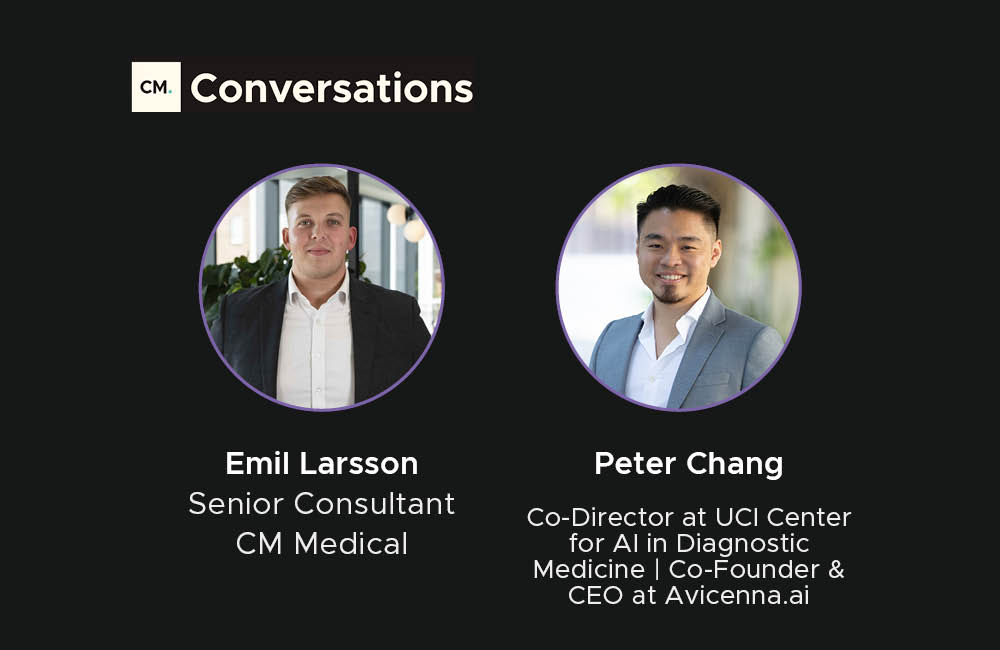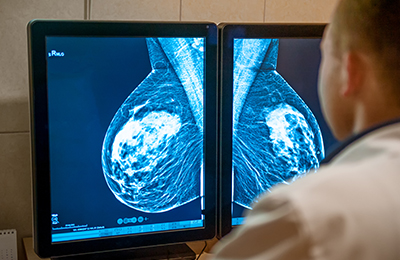

AI in Imaging Going Global.
Medical imaging generates around 90% of all healthcare data and is a fundamental part of healthcare. In all its forms, imaging produces phenomenal amounts of data; there are an incomprehensible number of images stored on hospital servers around the world today.
And it’s exactly this data that lends itself so well to the application of Artificial Intelligence. AI thrives off data. It uses it to establish a base knowledge which then enables it to further develop its skill set and grow.
So, AI and imaging are a great match. That’s why imaging has been a real focus for many AI companies for a number of years. As a result of that focus and the development of the technology, it’s likely that we’ll see widespread AI at the Point of Care (POC) in the next five years in medical imaging.
However, not all images are created equal, and it’s not the case that AI can just be applied across the board. AI will be much easier to integrate into some imaging processes than others. I spoke with two industry leaders who have identified areas that AI can be applied.
Charles Cadieu is CEO of Bay Labs, a company combining AI deep learning algorithms with cardiovascular imaging to provide better insight into the diagnosis and management of heart disease.
I also had a conversation with Dr Hugh Harvey, Clinical Director at Kheiron Medical, a company dedicated to helping radiologists detect breast cancer earlier using deep learning and AI.
I wanted to know what it would take to change AI from being a fringe player in imaging to being implemented internationally. I wanted to answer the question, what needs to happen to make AI -assisted medical imaging truly global? First though, it’s important to know why all the excitement.
What’s all the Excitement About?
There’s been a lot of noise made around this subject. It was a hot topic at RSNA and the recent ECR and has been a point of interest for a long time. IBM’s $1B acquisition of Merge Healthcare was announced as long ago as 2015, and since then both the technological capability of the devices on the market and the anticipation surrounding it have developed significantly.
Dr Hugh Harvey and Kheiron Medical see AI as an opportunity to solve some major problems in mammography, namely the workload for specialists and the ability to utilise the vast quantities of data that have been accumulated.
He mentioned that mammogram screening has been digital since the turn of the century in the UK. That means there’s millions of images stored in the depths of NHS – far too many for any one person, or even a team, to be able to interpret.
Enter AI. It can collate, aggregate and learn from this data, using it to empower specialists in analysing future mammograms and making decisions. The amount of data is exactly why mammography and breast cancer detection is so well suited to AI. As breast screening is compulsory for women in the UK, the workload has become vast. Therefore, Kheiron’s AI-enabled solution aims to lessen the workload for mammographers.
Bay Labs think that their technology can help with the skills shortage in their market too, namely by democratising the process and enabling healthcare personnel to provide quality echocardiogram examinations. Charles spoke about the difficulty of conducting an ultrasound with a probe – it’s a very skilled process, using a simplistic analogy he described it as like “trying to cut your own hair whilst looking in a fun house mirror". People have a good idea what the end result should look like but have no idea how to get there.
AI-enabled technology could help by walking a practitioner through the process, reducing the “cognitive burden” on those conducting the scans, opening it up for medical assistants to perform the procedure and allowing specialists to better use their expertise elsewhere. Butterfly Network are leading the way in this regard already.
Even just looking at these two parts of the imaging market, the potential is clear. But what’s stopping AI in imaging from going global? From my conversations, I identified three steps that need to be taken to unleash AI’s full global potential.
#1 Democratise Data
AI technology is smart. It can process data and information in a way that we as humans struggle to even comprehend, never mind attempt ourselves. However, to perform those tasks, it needs data to work with.
And whilst that data is for the most part online (as in the case of digital mammograms), that doesn’t mean it’s easily accessible. In the UK alone, each hospital or trust will likely have a totally different IT infrastructure and storage system to others and data sets aren’t shared. This means it can be difficult for AI companies to access the data they need.
Dr Hugh spoke of the challenges that the sometimes-outdated NHS infrastructure presents, but that they are making headway. Kheiron have recently partnered with the East Midlands radiology consortium, the largest consortium of hospitals in the UK who have shared IT infrastructure. This immediately unlocks several hospitals’ data for Kheiron to access and learn from.
That’s been a big win for Kheiron but in the grand scheme of things, it’s seven or eight hospitals out of hundreds just in the UK. Giving AI-enabled imaging technology access to this level of data on an international or even global level would accelerate the development, accuracy and acceptance of the technology.
#2 Break Down International Barriers
The world’s smaller than it’s ever been.
If and when step #1 is complete and technology providers manage to gain access to imaging data from around the world, the next step begins. That’s winning the hearts, minds and budgets of hospitals in international territories.
For this to happen, it’s not going to be enough for a trial to have taken place on the other side of the world, however successful. The technology will need to go global, something Dr Harvey is responsible for at Kheiron. He spoke of the “holy grail” of FDA approval in the US, but to achieve that they have to have the partnerships with the hospitals there. However, with the different, privatised system access to the data can be even more problematic for intellectual property reasons.
Dr Harvey summed it up well here, saying:
“An AI system built for the NHS may not necessarily translate to an American version. A lot of tweaking and administration would need to be done globally.”
And that’s just two relatively similar countries – the UK and US. How then do companies plan to crack even more diverse markets like Asia or Africa where laws, data and conditions vary significantly?
Answering questions like these is key to creating and achieving global buy in.
#3 Collaborate
As we’ve already illustrated, the issues standing between AI and widespread implementation, even in developed countries will require huge amounts of work and infrastructure. And even companies with the ability to spend billions of dollars like IBM are unlikely to be able to take on the global market alone. This was compounded by Dr Harvey, who said “it should be about cross collaboration and partnerships. And I don’t think any single entity can do this all on its own… you need partnerships to do that”.
Partnerships are something that Charles and Bay Labs have been creating and executing to great effect. They’ve cultivated an extremely successful partnership with Edwards Lifesciences. Charles spoke of the many ways in which Edwards’ expertise plugs the gaps in their knowledge, just as Bay Labs’ tech extends the diagnostic capability of their products.
It comes back to this question of democratisation; we’ll likely see a lot more collaborations taking place like Bay Labs’ and Edwards. To bring AI to the POC for the masses, collaboration is essential.
What Next?
Completing these three steps is no small task. Allowing widespread access to clinical data, conducting successful clinical trials on an international basis and forming effective partnerships will take years, and only then will we see widespread global adoption of AI-enabled technology.
What’s a certainty is that AI will be widespread. Whether it’s Kheiron, Bay Labs or another business that is fully accepted at the POC first, someone will. Then it’s going to be fascinating to watch the rest of the journey from there.
Recommended.

What Does Consumer Neurotech Innovation Mean for the Medical Device Industry?
Integrating systems into the human brain to control our everyday devices may seem very ‘Black Mirror’, but thanks to modern neurotechnology it's quickly becoming reality. Click to find out more.

How to Master Reimbursement in Medical Devices & Biotech.
In this live webinar, hosted by CM Medical, we went in search of expert reimbursement advice - speaking to Deborah Rizzi and Steven Haken of Odelle Technology.

How to Stand Out in a Saturated AI & Medical Imaging Market.
We asked an expert at an innovative medical imaging start-up about how they had overcome this challenge. Click now and listen to what they said.

Comments.